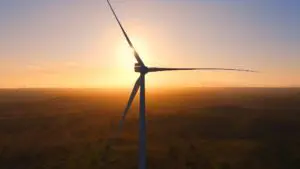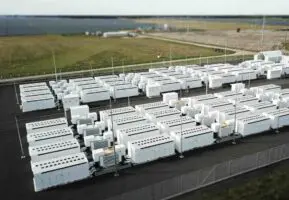State and federal energy ministers hailed progress they made in their COAG Energy Council summit late last week, but they may have condemned Australia to another great big investment bubble – this time in gas infrastructure.
The meeting of ministers – brought forward by the apparent energy “crisis” in South Australia – resulted in a couple of promising steps that may help contain price surges of the type seen in recent months, but it seems to have ducked action on the critical issues.

On the plus side, there is the creation of two new gas trading hubs that might improve transparency into a notoriously opaque market, and the potential for a new electricity inter-connector linking NSW and South Australia to be bought forward.
But elsewhere, not a lot of tangible progress was made. The ministers baulked at calls to write zero net carbon emissions into the electricity market goals, despite that being implicit in the Paris climate goals that Australia has signed up to.
And if the energy ministers did avoid turning the meeting into an anti-renewable jihad – as they were lobbied to do and might have been tempted under a previous federal energy minister – they did come face to face with some of the significant barriers to the rapid transition to a low emissions grid that they profess to support.
One such example came from the Australian Energy Market Operator, whose chairman Anthony Marxsen stunned the audience on Friday when he suggested during a presentation that battery storage technology could be up to 20 years away from making a commercial contribution.
Some dismissed this as garbage and a plug for the gas industry. AEMO is 40 per cent owned by industry “players”.
Another is the painfully slow progress from the main policy maker, the Australian Energy Market Commission, which has been dragging out crucial rule changes most people believe are essential to moving to new technologies.
The ministers appear keen to give it a hurry up, and hope that their decision to now meet every few months will help that. “We want it to stop stuffing around,” said one participant, echoing a sentiment that would be warmly received in many sectors of the industry.
Institutional inertia is a major issue. If the market operator is seen as favouring incumbents and the status quo, the AEMC is seen as ponderous, and the Australian Energy Regulator as effectively toothless. That’s why another key item on the agenda was to look at how the AER’s decisions are reviewed, and whether it has been too easy to overturn its decisions – such as those curbing network costs – in the appeals tribunal.
The biggest fear, however, is that Australia is about to embark on billions of dollars of investment in gas infrastructure and associated investment that could quickly become redundant.
This is what environmental groups and others speak of when they responded, almost unanimously, with the view that the meeting had been a lost opportunity.
The fixation with gas appears to take no account of either the falling costs of competing technologies – wind, solar and the various storage and software options – nor of the biggest issue facing South Australia and other markets such as Queensland – a lack of competition.
Gas also does not fit easily into a zero net emission scenario. Australia needs to be accelerating the push into new technologies such as storage and software. Most assessments of how Australia can meet the Paris targets talk of using less gas, not more. This is particularly true of buildings, where the push it too dump gas appliances with electric ones, and accelerate the push to zero carbon electricity.
It also ignores that the central issue is not just the price of gas itself, but the competition in the market. This issue can be partially relieved by the construction of a new interconnector, but the real solution lies in encouraging competing technologies.
It may also lie in toughening up the rules. The regulators appear to have learned nothing, because they were told the same thing a decade ago after price spikes in 2008, soon after AGL took possession of both Torrens Island gas plant in Aouth Australia. A similar warning about market power was brushed aside when AGL bought Macquarie generation in NSW.
But there are clearly disparate views within the states themselves.
Victoria, which aims for 40 per cent renewables by 2025, is reluctant to embrace coal seam gas. South Australia, which is already well past that level (45 per cent) wants the renewable energy target to be replaced with an “emissions intensity” scheme that would reward gas generators as well as renewables.
The ACT is on track to reach 100 per cent renewable generation within four years. The conservative states, NSW, Western Australia and Northern Territory, were virtually mute. The exception was Tasmania, which is facing the reality of climate change, noting the record spring and summer dry that forced its dams to dry up, curtailing its hydro resources, followed by record floods.








